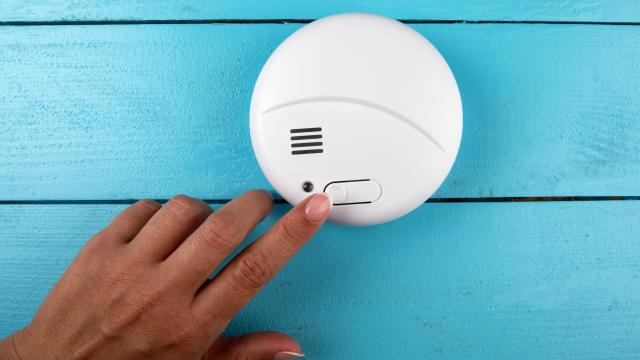Smoke and carbon dioxide detectors serve an important, potentially life-saving function, and should be located throughout every home. In addition to installing them in the right places, you should also take the time to check the instruction manual that came with yours to learn the meanings of the various types of beeps, chirps, and alarm sounds it makes.
But what if you’ve misplaced (or gotten rid of) these instructions (and they’re not printed on the back of the device), and find yourself in a situation where there’s no smoke, carbon monoxide levels are fine, you’ve replaced the batteries, and your smoke detector is still beeping at regular intervals? Here’s what that means.
Decoding smoke detector beeps and chirps
Although there are a range of different smoke and carbon monoxide detectors, according to the US National Fire Protection Association (NFPA), the meanings of their beeps and chirps are largely the same across models and brands.
Beeps vs. chirps
First, some terminology clarification: Though the specific tones may vary, when it comes to the length of the individual sound (not how long the alarm has been going off), chirps tend to be shorter than beeps. This page on the NFPA website gives audio examples of each.
The meaning of each alarm sound
According to the NFPA, here’s what each alarm sound means:
- Continued sets of three (3) loud beeps: Smoke or fire has been detected
- Continued sets of four (4) loud beeps: Carbon monoxide has been detected
If you hear either type of alarm, get out of your house, call 9-1-1, and don’t go back inside until you’re told that it’s safe to do so.
Other times, the beeps or chirps function as maintenance instructions:
- One chirp every 30 to 60 seconds: It’s time to replace the battery
- Continued sets of three (3) loud beeps, but no smoke or fire: The smoke detector is dirty
Over time, dust, dirt, spiders, insects, and other debris can accumulate inside a smoke detector, eventually setting off the alarm. Check the back of the alarm to see if the manufacturer provides cleaning instructions. If not, you can gently vacuum the smoke detector, or clean it using compressed air, according to the NFPA.
The end-of-life chirp
Let’s say your smoke detector starts chirping once every 30 to 60 seconds, and doesn’t stop after you’ve changed the battery. Perhaps you try another new battery, just in case the first one was faulty, or someone put it back in the package used. That doesn’t work, so maybe you clean it with a vacuum or compressed air. No matter what you try, the chirping doesn’t stop.
That is what’s known as the “end-of-life” chirp: When your smoke detector lets you know that it can no longer do its job, and now must die (i.e. you have to replace it with a new one).
This typically happens when one has been in use for around 10 years, though some smoke and carbon monoxide detectors don’t always last that long. So, regardless of its age, if you determine that you’re hearing the end-of-life chirp, the NFPA recommends replacing your current smoke detector with a new one.

Leave a Reply
You must be logged in to post a comment.